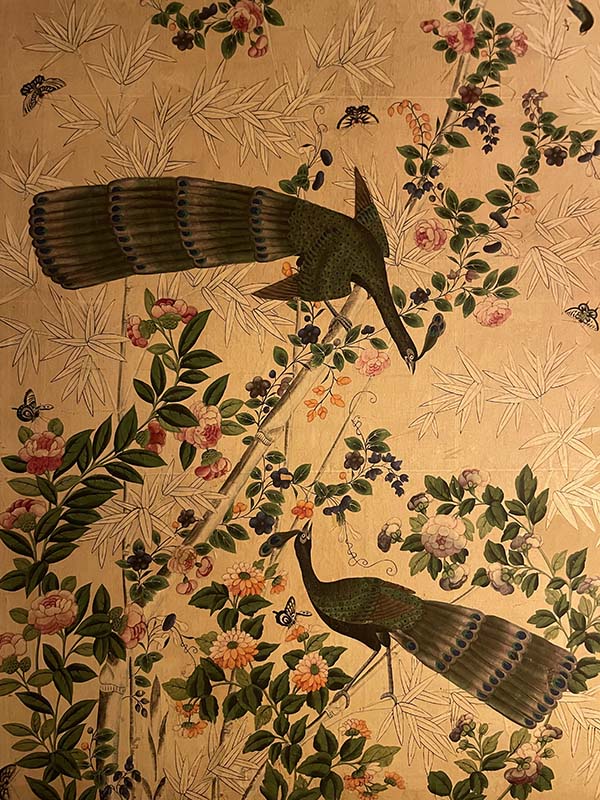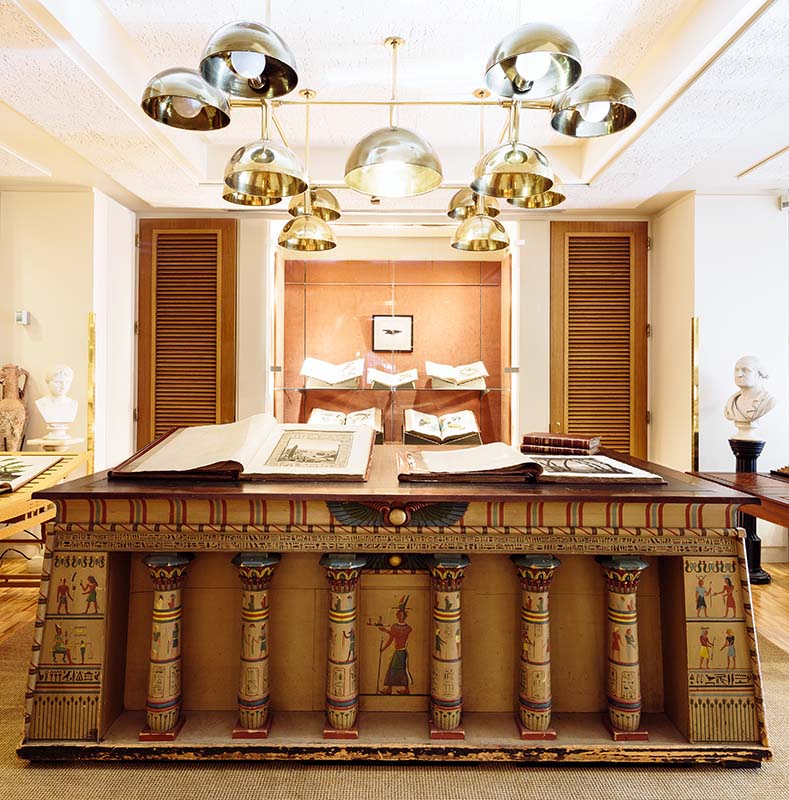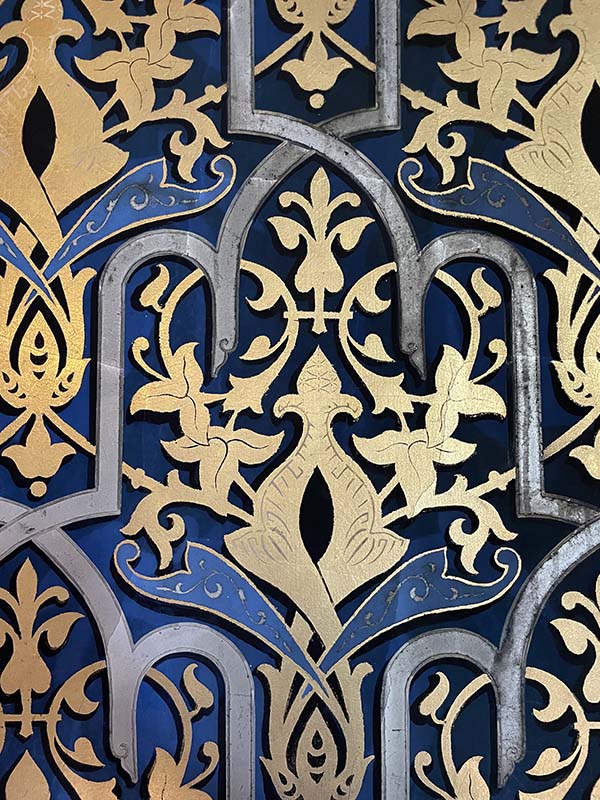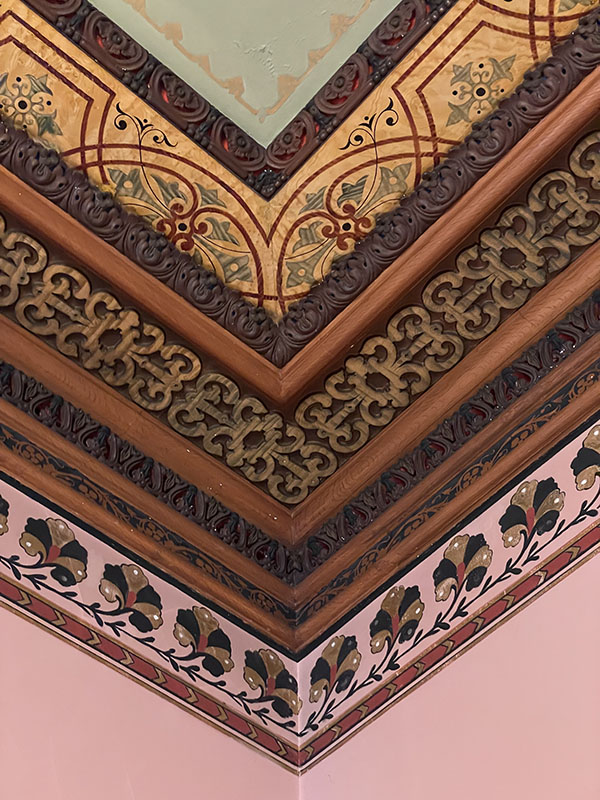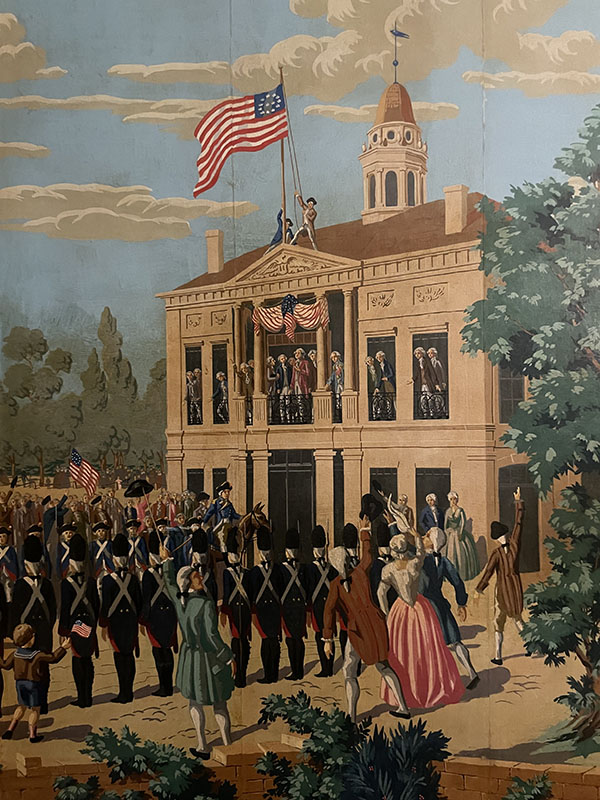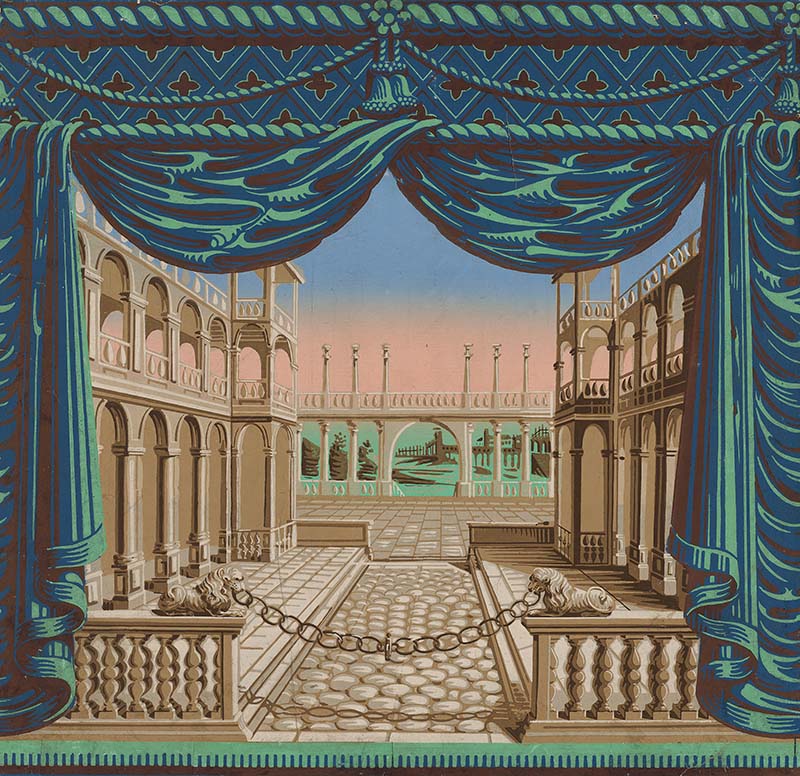Papered and Painted in Providence
Click on images to enlarge them and view captions.
by Matthew A. Thurlow
Although the grandeur of Gilded Age Newport typically serves as the focal point for the exploration of Rhode Island history and culture, our Fall Symposium underscored the importance of Providence. With significant sites stretching from the 18th century through modern day coupled with the learned presence of leading universities and museums, the Ocean State’s capital city has much to offer.
Reflecting on the disparate venues we visited over the course of four days, the prevalence of ornamented surfaces, specifically wallpaper and paint decoration, emerged as a noteworthy material culture thread. These elements each testify to Providence’s significant contacts with designers, makers, and trends through a global network of trading partners in the 18th and 19th centuries as well as the wealth generated through the city’s prominent manufacturing sector. As an intellectual, collecting, and preservation hub in the 20th century, new opportunities arose to gather and incorporate wallpaper and painted ornament.
During our opening reception, generously sponsored by Brunk Auctions, guests had the opportunity to tour the Corliss-Carrington House (c. 1810). Edward Carrington purchased an unfinished residence from John Corliss, who abandoned the project after facing legal and financial setbacks. Carrington had served as the United States Consul in China before establishing a vast mercantile enterprise that kept him connected to the Far East. Among the many goods imported through his trading network is the hand painted Chinese peacock wallpaper (figure 1) preserved in the parlor that was modeled from the Carrington family crest. Carrington also acquired a pictorial paper by the French maker Dufour for the dining room.
Although primarily associated with a splendid collection of books, the Providence Athenaeum contains one of the more impressive pieces of 19th-century painted furniture, the Egyptian Elephant Folio Cabinet (figure 2). In 1838, the library acquired Description de l’Égypte, a richly illustrated, multi-volume, large-scale series that traced the history of ancient and modern Egypt. John Russell Bartlett, who helped to establish the Athenaeum in 1831, designed the cabinet to house this important purchase with the assistance of English architect Frederick Catherwood. They selected the form of an Egyptian temple using decorative elements pulled from the pages of Description de l’Égypte. Thankfully, the Athenaeum’s archives retain the invoices from the cabinetmakers (Millard & Lee) and decorative painter (Kingsley C. Gladding) that brought Bartlett and Catherwood’s vision to life.
Although Victoriana is not to everyone’s taste, Providence’s Lippitt House (1865) contains an absolutely extraordinary range of painted decoration. From faux grained doors and ceilings to walls and cornices, textile manufacturer Henry Lippitt and his family were inundated with decorated surfaces, which supplemented the effusive plaster, woodwork, and furnishings.1 Lippitt purchased the bulk of the furniture from the local retailer Anthony, Potter, and Denison but also turned to the highly regarded New York firm of Pottier & Stymus. The library was finished in accordance with the taste for Moorish design (figure 3), which was popularized by Owen Jones through the Crystal Palace exhibition a decade earlier and was recreated in Providence by British immigrants Donald Cattanach and Samuel Cliff. The combination of Cattanach and Cliff’s decorative painting overlaid on the plasterwork of local artisan Andrew Dempster is particularly dazzling in the cornice of the reception room (figure 4).
In addition to the stunning collection of 18th-century furniture contained within the Rhode Island Historical Society’s John Brown House, the interiors demonstrate the continuity of wallpaper as an emblem of Colonial and Colonial Revival design. Brown’s great-great-grand nephew, John Nicholas Brown II, purchased the house in 1936, the year that marked the tricentennial anniversary of Roger Williams’s arrival in Rhode Island. He hired the early wallpaper scholar and dealer Nancy McClelland to create a mural of George Washington’s inauguration in New York City in 1789 (figure 5). Rather than block printing, the methodology behind historic scenic papers, a team of local artists executed McClelland’s design as part of a Works Progress Administration project.
Finally, as a temptation to plan a future expedition to Providence, Emily Banas, the Rhode Island School of Design Museum’s Associate Curator of Decorative Arts and Design, is curating an exhibition in 2025, The Life of Wallpapers: The Huard Collection at the RISD Museum. The show will offer new insights into the design, printing, and use of French wallpapers (figure 6), borders, fragments, and design drawings. These rare samples are drawn from a remarkable collection assembled by French couple Charles and Frances Wilson Huard, which they sold in 1934 to RISD with the hope it would remain safe in Providence as Europe headed toward World War II. The exhibition will feature over 100 examples from their collection that reveal the creative process and extraordinary technical skills involved in producing French wallpaper in the 18th and 19th centuries.
Next time you are cruising up I-95 or setting your sights on Newport, we hope you have the chance to visit these sites and Providence’s many other alluring destinations.
- Cogswell, Elizabeth Agee. “The Henry Lippitt House of Providence, Rhode Island.” Winterthur Portfolio 17, no. 4 (1982): 203–42.
Matthew A. Thurlow is the Executive Director of the Decorative Arts Trust.
A print version of this article was published in The Magazine of the Decorative Arts Trust, one of our most popular member benefits. Join today!

